Canor TP106VR+ - £3,950

Canor is a new arrival in the UK but we have seen some of its handiwork before. The Slovakian based company used to be known as Edgar and its very distinctive wood fronted electronics featured a few years ago. These products are still available but were rebranded as Canor in 2007 and were joined by a range of more conventionally styled units that use valve topology. The £3,950 TP106VR+ seen here is the flagship integrated amplifier in the range.
More conventional styling or not, the Canor is still not a ‘normal’- looking valve amplifier. Most valve amps we have seen recently are open-chassis designs with the valve compliment on show. The Canor uses a completely enclosed chassis and gives very few external clues that it uses valves at all. The result is less visibly dramatic than the openchassis types, but does mean the valves are suitably protected by the chassis. The large volume control and illuminated input panel are more reminiscent of solid-state designs, but the overall effect produces a handsome product.
Unstressed configurationThe TP106VR+ uses four 6550 output valves. These are run in a relatively unstressed configuration and Canor claims an output of 55 watts into four ohms, which is well within the operating limits for the design. Canor says that the amp operates in Class A for the first 20 watts of output, which with speakers of reasonable sensitivity will be most of the listening someone would undertake day to day. The considerable 26kg all-up weight is partly down to the large high quality output transformers which in many regards are the single most important part of any valve amplifier.
Canor puts a considerable amount of effort into matching and testing the valves used in its amplifiers. Each valve selected is extensively tested before installation. To accomplish this, Canor has designed and built a variety of unique valve testing machines that are intended to ensure that each product proves as reliable as possible. One of these fearsome looking devices attended the recent Whittlebury hall show and gave an insight into how much effort that Canor puts into this aspect of design.
This quartet of output valves is mated to a preamp that uses four 12AT7 valves and a pair of 5AR7 valves as rectifi ers. The circuit also features high-quality Mundorf coupling capacitors for improved performance over the smaller Canor designs. The rear panel features four line inputs and a tape loop. No preout is fi tted and the TP106VR+ also makes do without a phono stage (given Canor makes a high-quality standalone unit, this is not too surprising). Another interesting omission is the lack of a choice of four and eight-ohm speaker outputs that are generally present on most valve amplifi ers to more effectively couple them to speakers. Given that Canor quotes most of its fi gures into four ohms, it is fair to suppose that the amp operates for the most part at four ohms.
The fit and finish of the TP106VR+ is excellent. The all-metal chassis feels substantial and very solidly bolted together. Removing the lid is a serious undertaking as it is held in place by 20 screws. Once the lid is removed, alongside the Mundorf parts is a collection of high-quality components in a well implemented circuit. The controls feel solid and well weighted and the paint finish is excellent. The lack of ostentation can initially make the amp seem a little subdued, but this is undoubtedly a high-quality product that has been very carefully assembled.
A welcome touch in a field of designs that are often very minimalist is the presence of a full remote control that not only does volume functions, but allows for input selection as well. As an added bonus, the remote is a smart brushed-metal affair rather than a parts-bin special. At £3,950, the Canor faces stiff competition from a number of designs (see left) but the raw materials are promising.
Well sortedMore promising still is the way that the amp sounds. Like many excellent valve amplifiers, there is absolutely nothing warm or bloomy about the performance of the TP106VR+. In a blind-listening scenario, there is nothing that would have a listener automatically assuming that the Canor was a valve-based design. This is a tremendously well sorted amplifier that happens to be built around valves. Into relatively sensitive speakers, the Canor shows no shortage of headroom and is likely to stay in the Class A area of operation almost all the time.
Visceral thwackThe most immediately arresting area of the Canor’s performance is the low end. This is a valve amp that can show many solid-state designs a thing or two about bass extension and timing. Drums have a visceral thwack that is felt as well as heard, but nothing is lost from the detail and timbre of the piece.
The upper registers of the Canor are equally adept. Often valve amplifiers can portray the sense of a fabulous midband, which in reality is more a reflection that the bass and treble performance is nowhere near as accomplished. The Canor feels seamless from top to bottom and this is mainly because it is equally capable across all parts of the frequency spectrum. There is superb detail and richness in the midband, as one might expect, but this doesn’t simply peter out as the frequency increases. Unusually for a valve design, the Canor can actually sound a little sharp with poorly recorded material and will readily reveal shortcomings in mastering and production on some material.
This insight and detail allows more thoughtfully recorded material to shine and this is further aided by the Canor’s excellent sense of soundstaging and depth. Musicians are given the space appropriate to their performance and the sense of the recording environment that captures the recording perfectly. Voices are given special treatment and are fabulously detailed and compellingly real. They are never separated from the recording, but they always take centre stage to proceedings. It is extremely hard to treat the Canor as background listening, as it has the habit of effortlessly grabbing attention away from whatever else you might happen to be doing.
Sensational performerThe TP106VR+ is not perfect. It can be ruthless toward less accomplished recordings and enclosed chassis or not, it runs very hot. There are also better specifi ed designs available for the same asking price (or less) and if you have tremendously insensitive speakers, it may struggle. For the most part however, this is a sensational performer that does a great many things extremely well. It is hard not to admire the care and attention that has gone into the design and the fi t and fi nish. The remote adds a welcome touch of civility, as well as greatly simplifying use.
The Canor faces no shortage of competition at the price point, but it rises admirably to the challenge. The performance and presentation is of an order that means that it should be considered even if a valve amplifier was not initially something you had on your shortlist. The power output should prove completely sufficient for real-world listening in most domestic situations and the closed chassis – given sufficient ventilation, makes no greater demands on placement that any solid-state design.
What the Canor offers is the timing, bass extension and general even handedness of a solid-state amplifier, coupled with an extraordinary lucidity and sweetness that solid state designs will struggle to match. This is a very fine amplifier indeed.
LIKE: Balanced and engrossing sound, excellent build quality
DISLIKE: Won’t flatter poor recordings, runs hot
WE SAY: A well thought out amplifier that offers a superb performance with real world usability
DETAILS
PRODUCT:
Canor TP106VR+
ORIGIN:
Slovakia
TYPE:
Integrated valve
amplifier
WEIGHT:
26kg
DIMENSIONS:
(WxHxD)
435x170x390mm
FEATURES:
• 4x 6550 Output valves
• Four line inputs
• Full remote control
DISTRIBUTOR:
Sound Fowndations
TELEPHONE:
01276 501392
WEBSITE:
canor-audio.com
 |
Inside this month's issue: Arcam Radia A25 integrated amp, iFi Audio iDSD Diablo 2 DAC/headphone amp, Eversolo DMP-A8 streamer/DAC/preamp, Line Magnetic LM-845IA valve amp, Record Store Day Spring Drop, standmount loudspeaker Group Test and much, much more
|


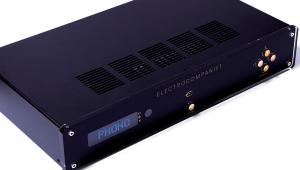


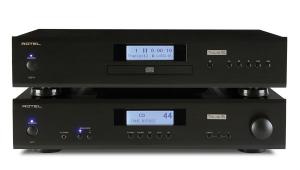

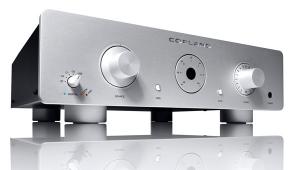




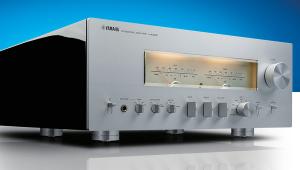
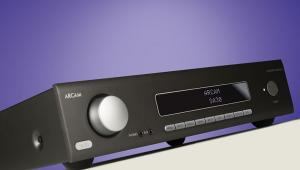

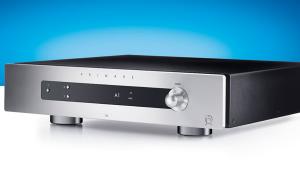
































.jpg)



